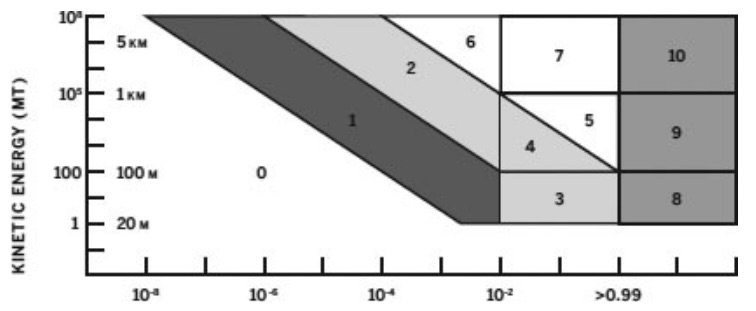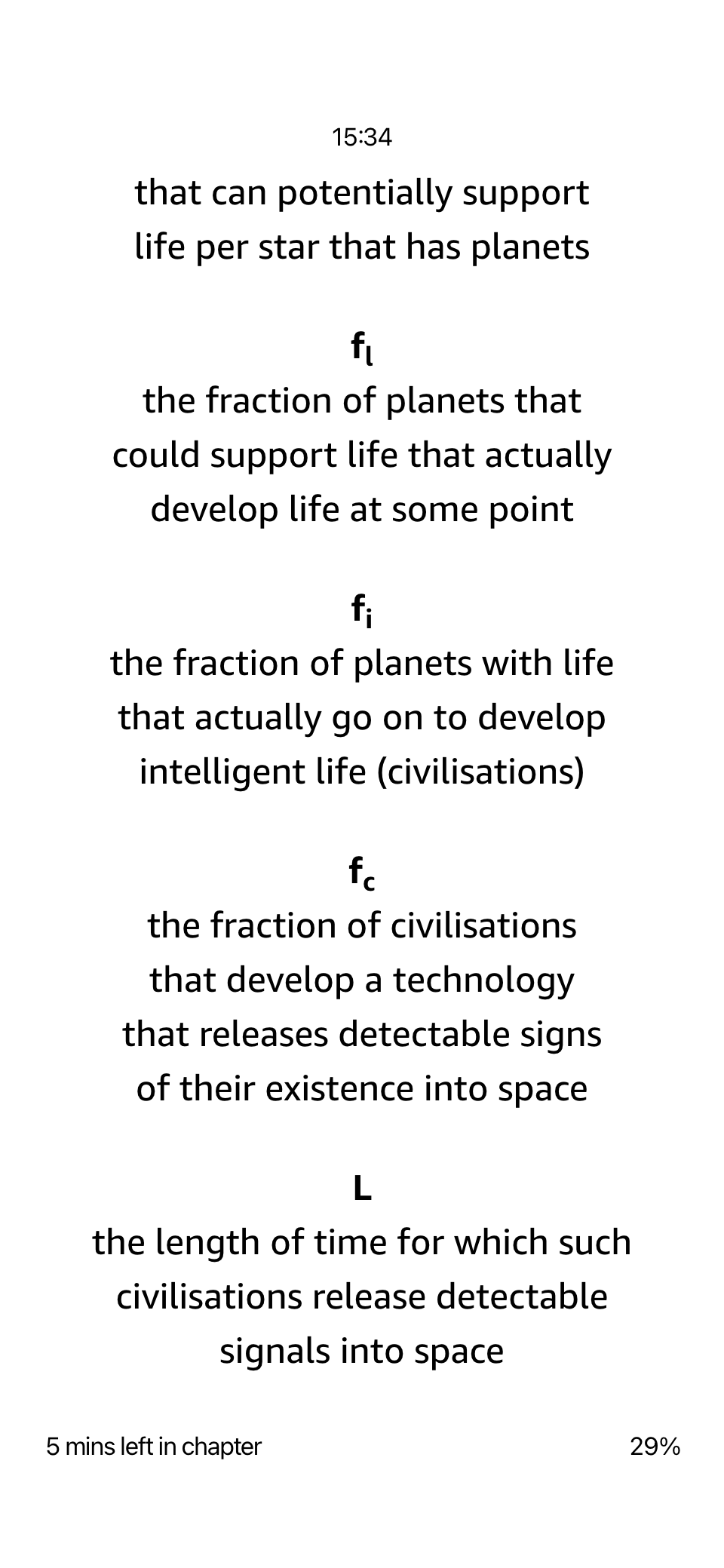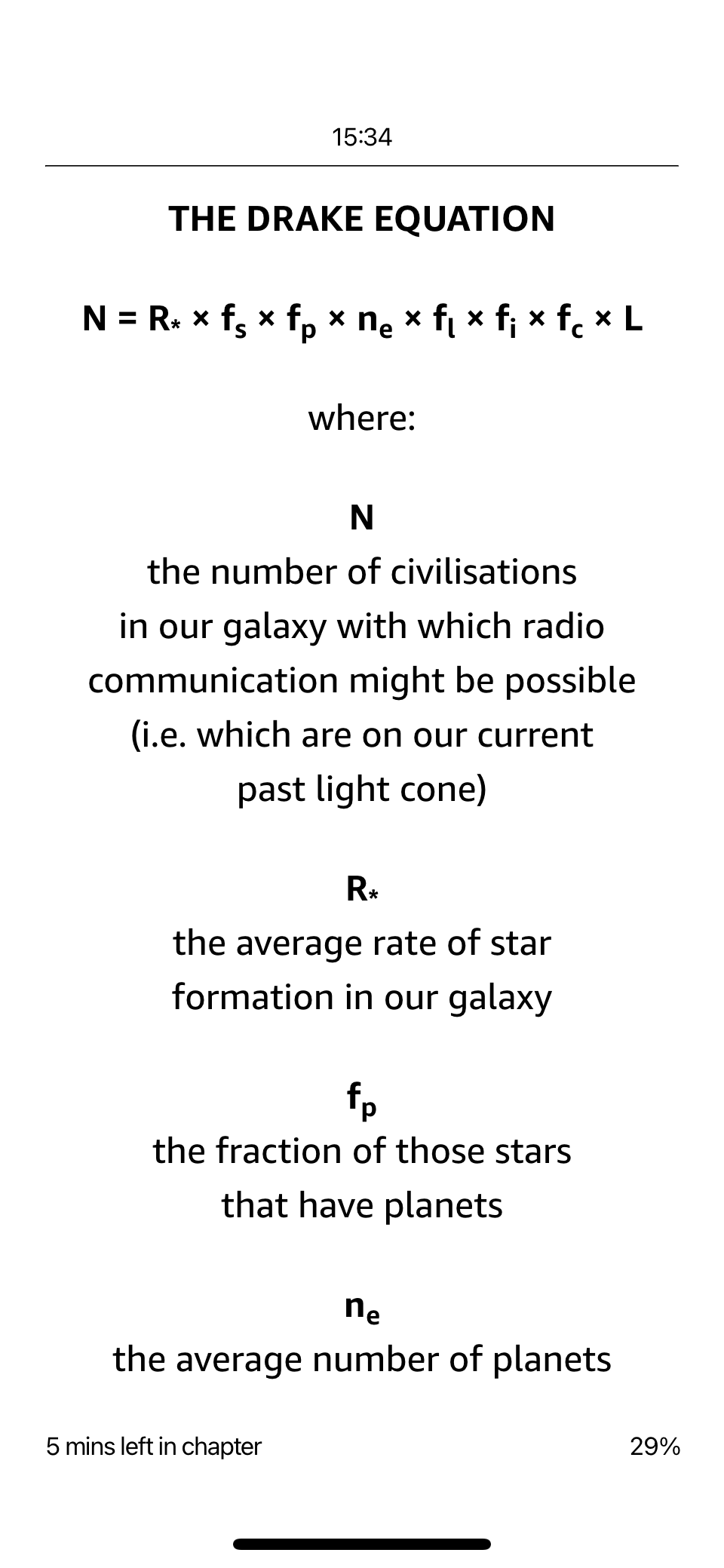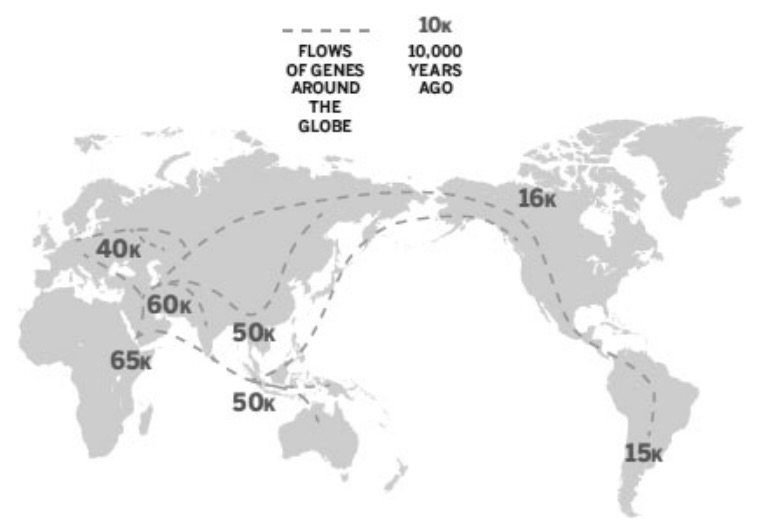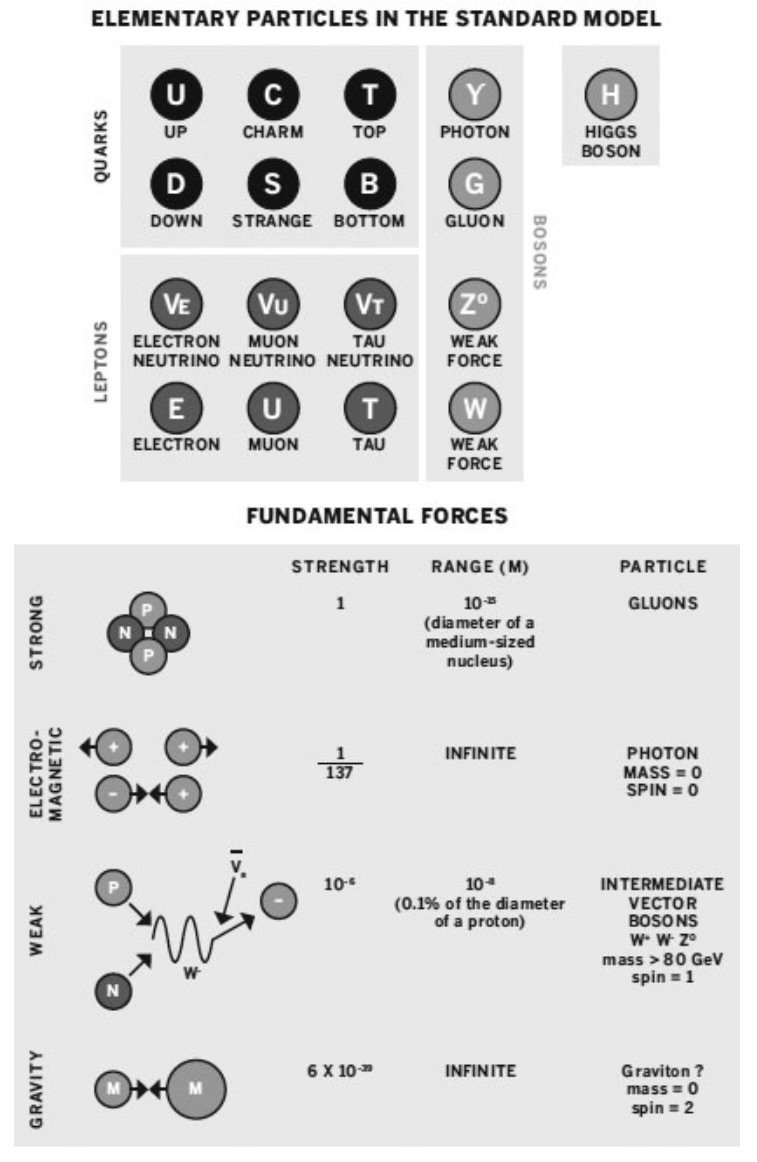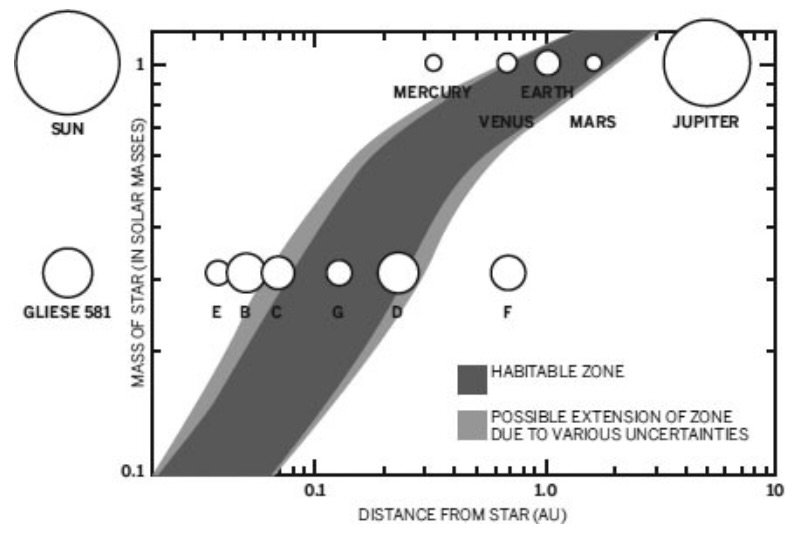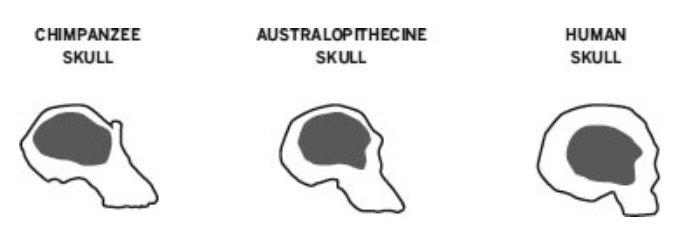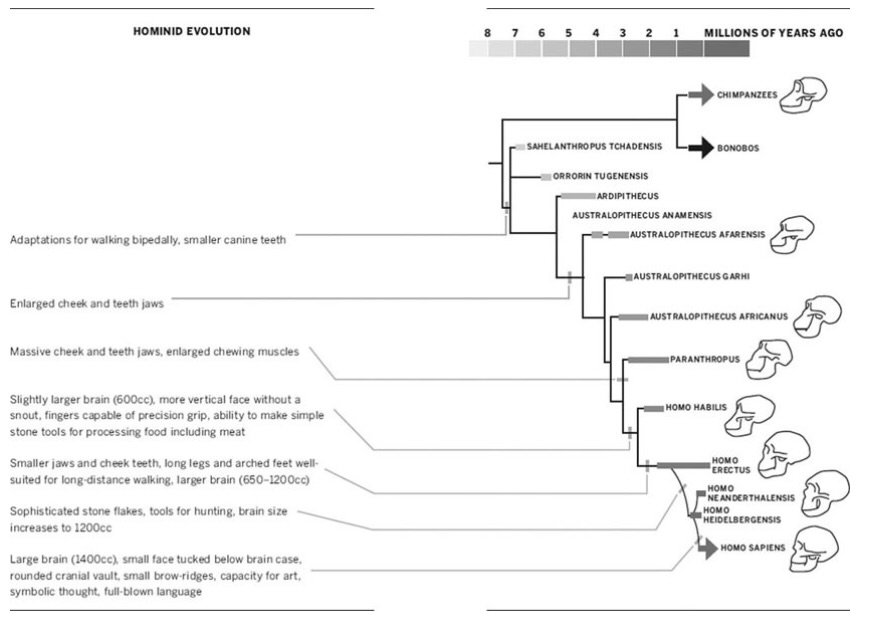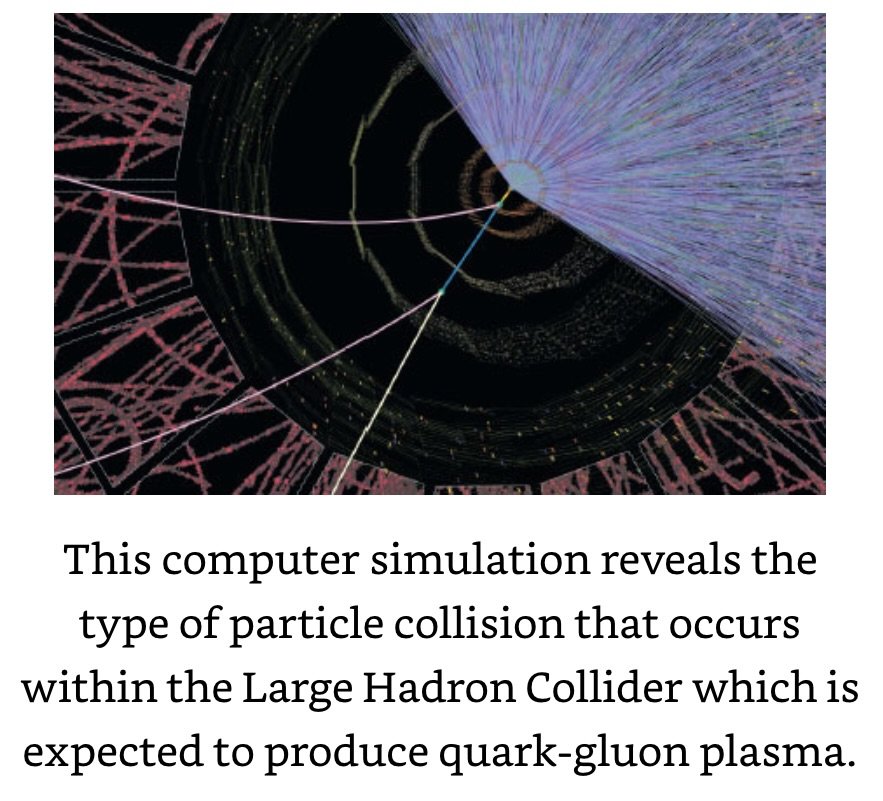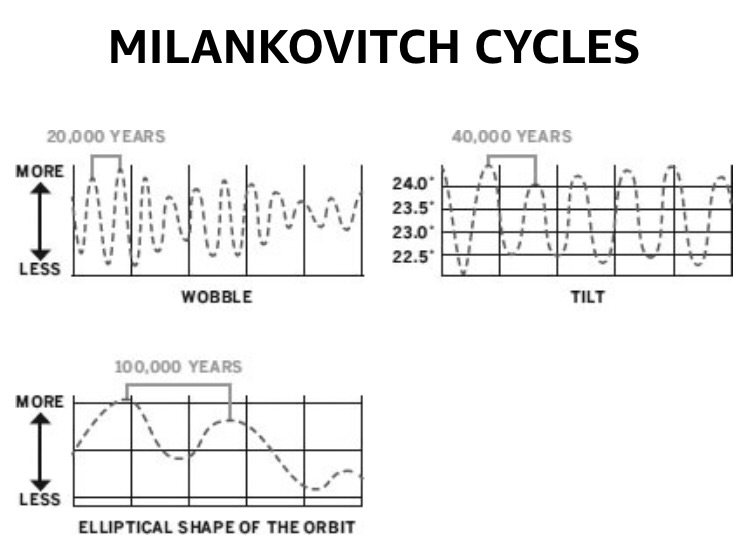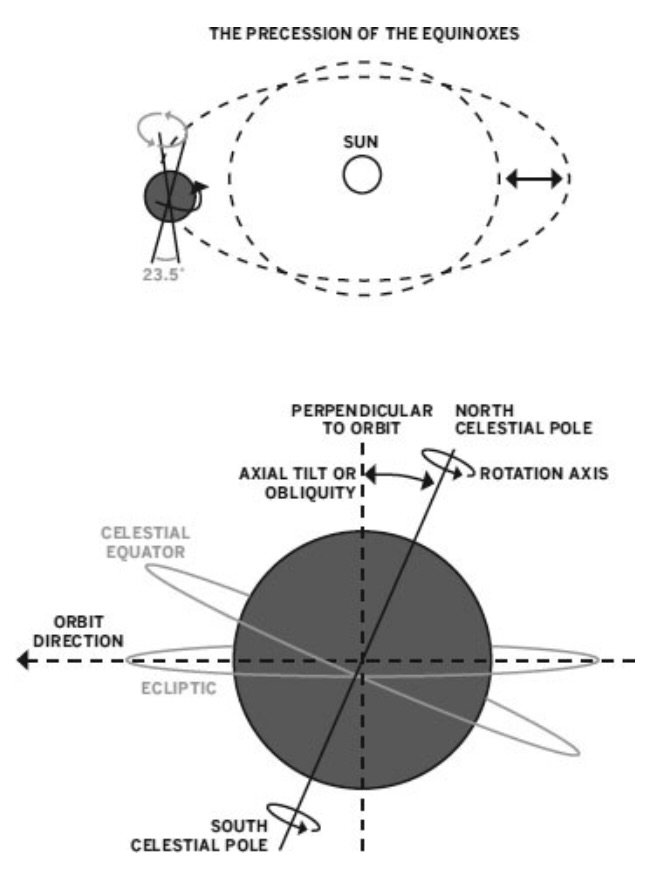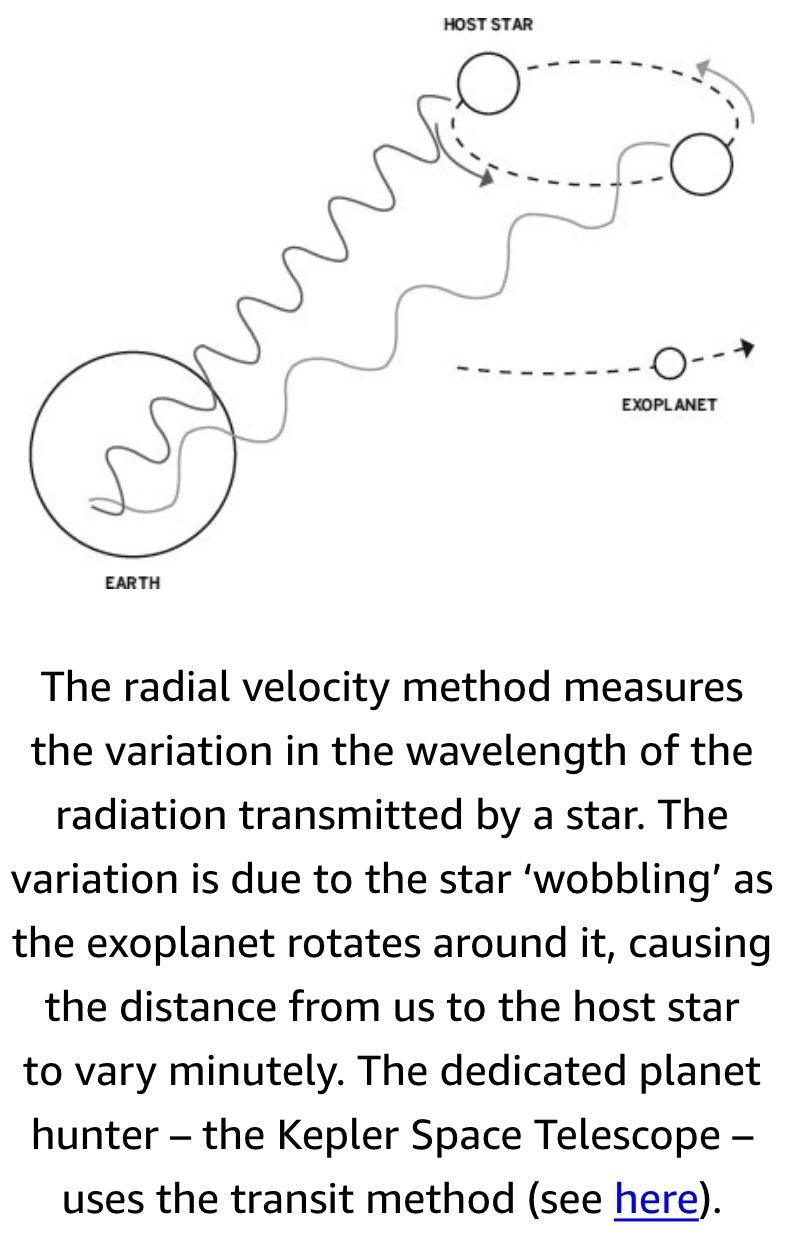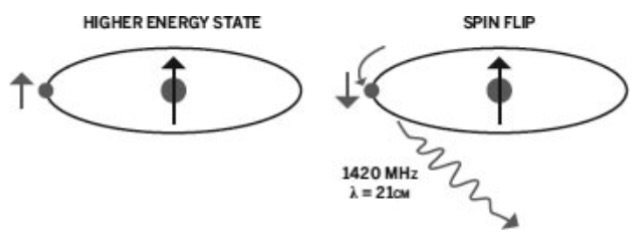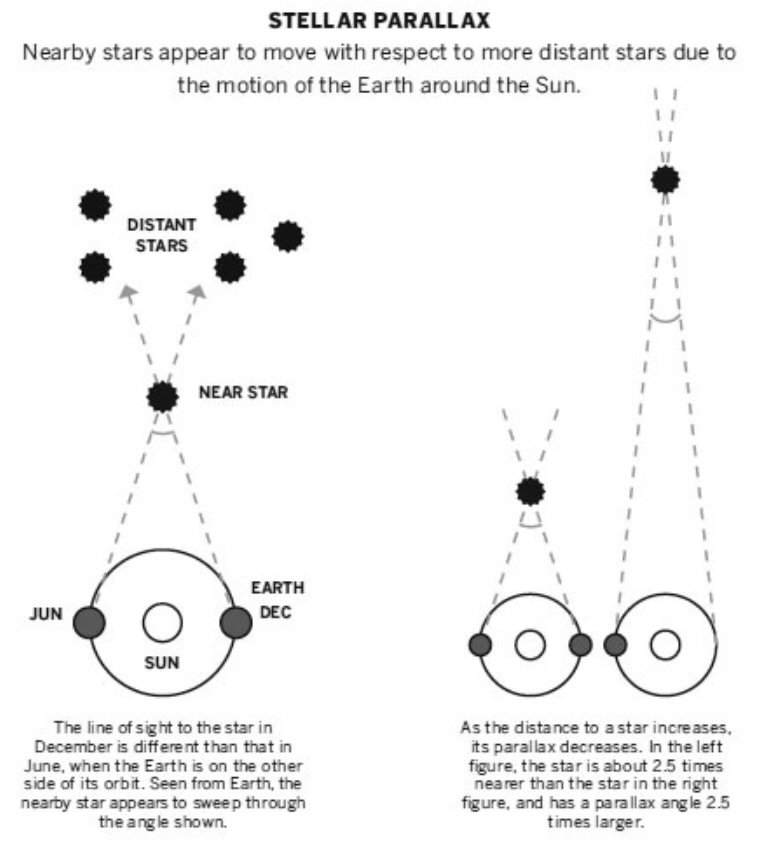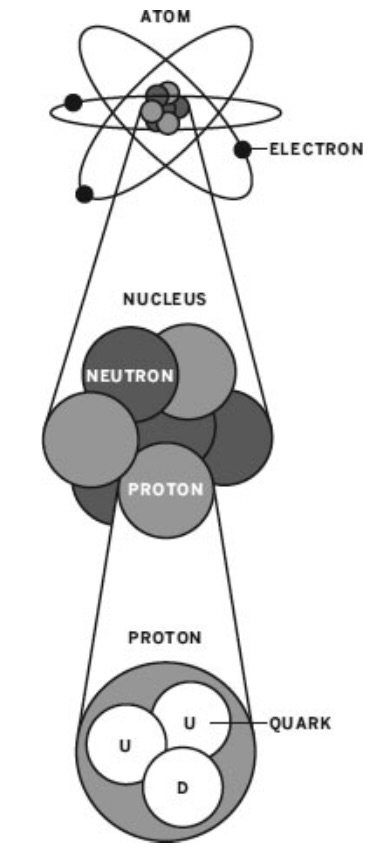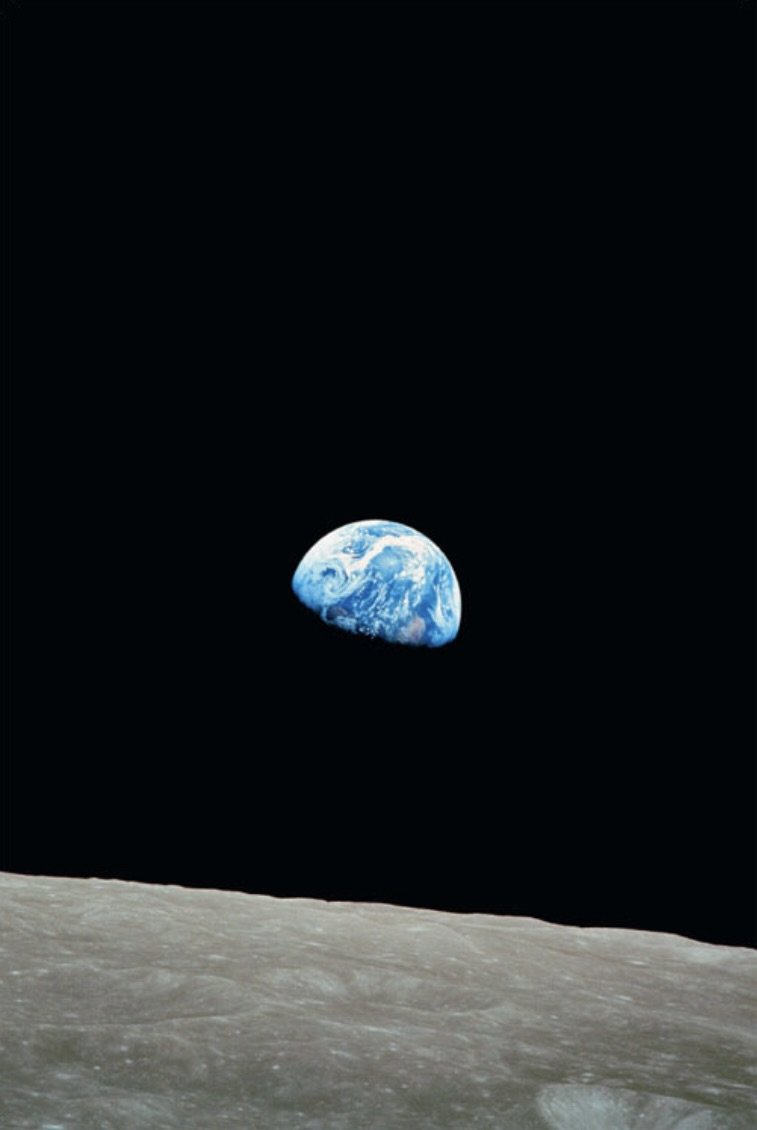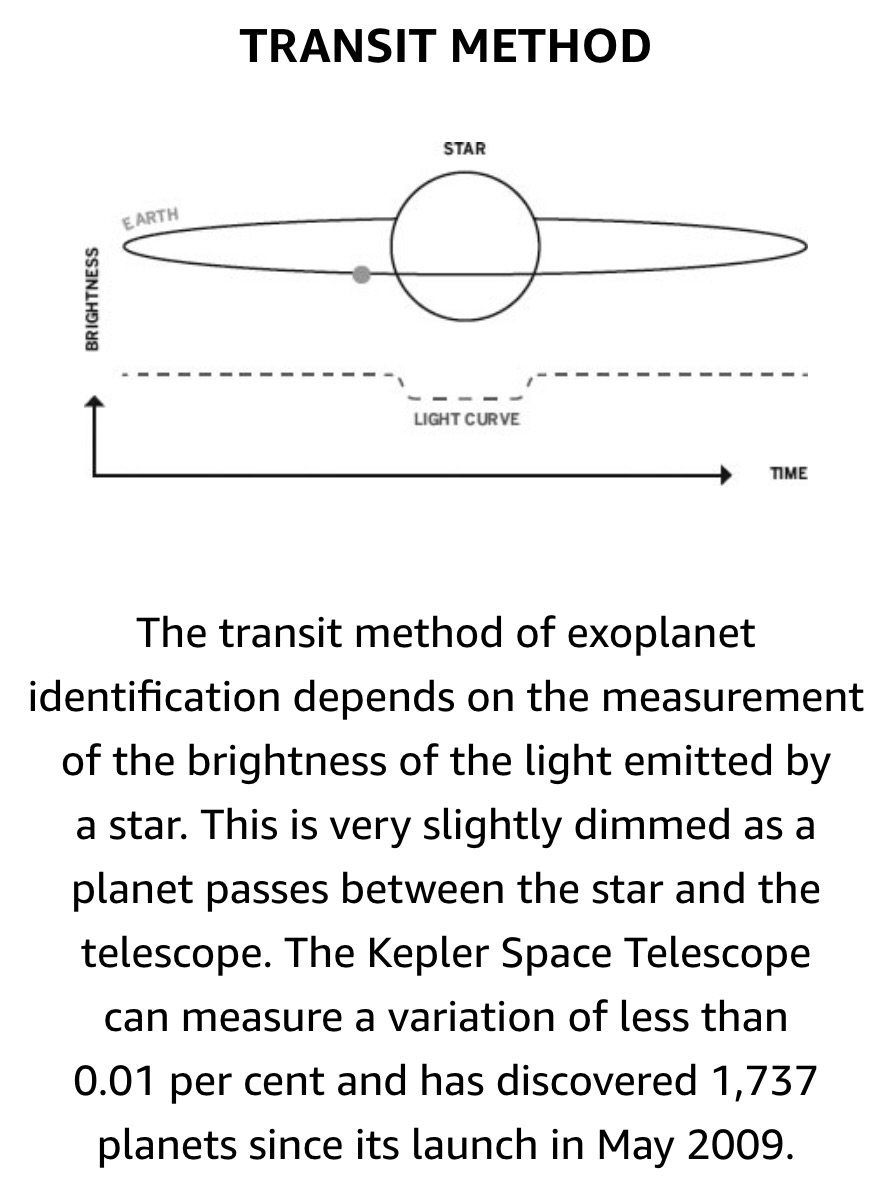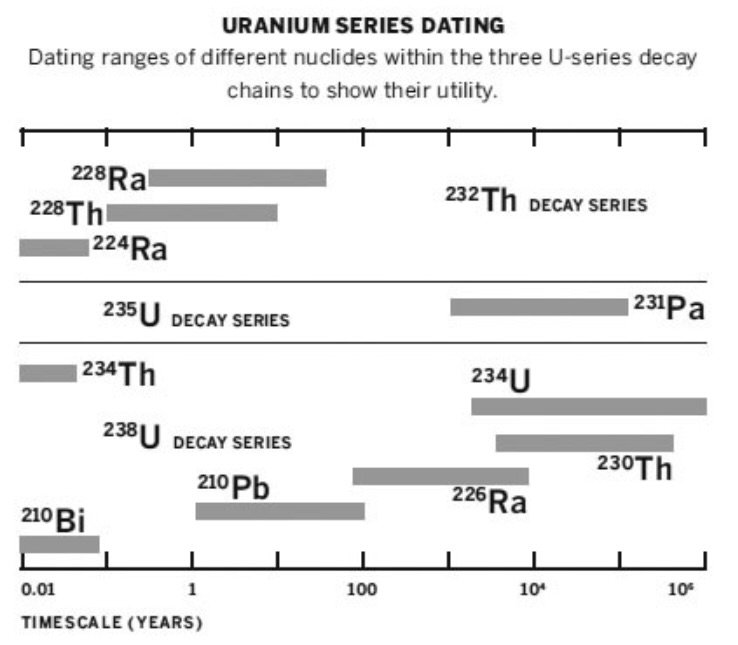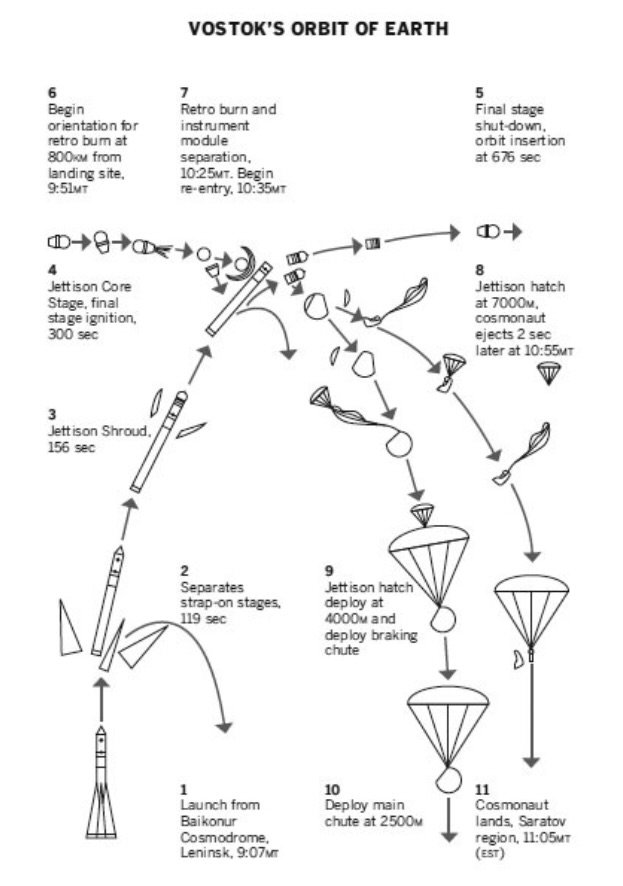Human Universe by Cox & Cohen
Ref: Brian Cox and Andrew Cohen (2015). Human Universe. William Collins.
___________________________________________________________________________
Summary
This book asks questions about our origins, our destiny, and our place in the universe.
My view is that we humans represent an isolated island of meaning in a meaningless universe…Our existence is a ridiculous affront to common sense.
Education is the most important investment a developed society can make, and the most effective way of nurturing a developing one. The young will one day be the decision makers, the taxpayers, the voters, the explorers, the scientists, the artists and the musicians. They will protect and enhance our way of life, and make our lives worth living. They will learn about our fragility, our outrageously fortunate existence and our indescribable significance as an isolated island of meaning in a sea of infinite stars, and they will make better decisions than my generation because of that knowledge. They will ensure that our universe remains a human one.
The US spent 2.79% of its GDP on increasing knowledge in 2012 – the UK spent 1.72%. It has been estimated that the return on R&D spending in today’s world economy is approximately 40:1. Imagine what we could do if we took these figures seriously.
All scientific ‘Why?’ questions end with ‘I don’t know’ if you keep pushing far enough, because our scientific understanding of the universe is not complete. The most fundamental description we have for anything comes down to a set of theories describing the smallest known building blocks of the universe and the forces of nature that allow them to interact with each other. These theories are known as laws of physics, and when we ask about the origin of these laws, the answer is ‘We don’t know’.
Scientific predictions are not perfect. Scientific theories are never correct. Scientific results are always preliminary. Whole fields of study can be rendered obsolete by new discoveries. But, I insist, science is the best we can do because it is not simply another arbitrary system of thought based on dreamt-up human axioms. It is the systematic study of nature, based on observations of the natural world and our understanding of those observations. Scientific predictions are not matters of opinion. At any given time, science provides the best possible estimate of what the future might bring, given our current understanding. The predictions may be wrong, they may be inaccurate, the errors may be fundamental in origin, but there is simply no other rational choice than to act according to the best available science, imperfect though, by necessity, its predictions will always be.
By focusing on tiny but interesting things with honesty and clarity, great and profound discoveries are made, often by flawed human beings who don’t initially realize the consequences of their investigations.
I think that advanced, space-faring civilizations are extremely rare, not because of astronomy, but because of biology. I think the fact that it took almost 4B years for a civilisation to appear on Earth is important. This is a third of the age of the universe, which is a very long time. Coupled with the remarkable contingency of the evolution of the eukaryotic cell and oxygenic photosynthesis – not to mention the half a billion years from the Cambrian explosion to the very recent emergence of Homo sapiens and civilisation – I think this implies that technological civilizations are stupendously rare, colossally fortuitous accidents that happen on average in much fewer than one in every 200B solar systems. This is my resolution to the Fermi Paradox. We are the first civilisation to emerge in the Milky Way, and we are alone.
We live in an infinite, eternal, fractal multiverse comprised of an infinite number of universes like ours, alongside an infinite number of universes with different physical laws.
___________________________________________________________________________
Universe
Universe: ~93B light years across (at least that we can see) with an average temperature of 2.72548 +/0.00057 Kelvin due to its expansion.
If we look out to the CMB from opposite sides of the Earth, we are looking at two glowing parts of the ancient sky that are now separated by 90B light years. The universe, however, is only 13.8B years old, which means that light, the fastest thing there is, has only had time to travel 13.8B light years. Two ‘opposite’ parts of the CMB could therefore never have been in contact with each other in the standard Big Bang model, and there is absolutely no reason why they should be almost precisely the same temperature.
Dark Energy: Comprises ~68% of the energy in the universe and appears to be gently increasing its expansion rate.
Dark Matter: Comprises ~27% of the energy in the universe. The nature of this is also unknown, but it probably comes in the form of as yet undiscovered sub-atomic particles.
Our best theory of space and time, Einstein’s General Theory of Relativity, no longer applies at the earliest times; the conditions were so extreme in those first moments, known as the Planck epoch, that some kind of quantum theory of gravity, which we do not possess, will be needed to describe it…Einstein tried to find a solution to his equations that would describe a finite universe, populated by a uniform distribution of matter, and stable against gravitational collapse. He discovered, however, that General Relativity does not allow for a universe with stars, planets and galaxies to be eternal. Instead, his solution told the story of an unstable universe that would collapse inwards. Einstein tried to solve this unfortunate problem by adding a new term in his equations known as the cosmological constant. This extra term can act as a repulsive force, which Einstein adjusted to resist the tendency of his model universe to collapse under its own gravity. Later, he is famously said to have remarked to his friend George Gamow that the cosmological constant was his biggest blunder.
Inflation: An assumed period of exponential expansion before the Big Bang. When inflation stopped, the energy contained within the field that drove it was dumped back into the universe, creating all the matter and radiation we observe today. Small fluctuations in the inflation field seeded the formation of the galaxies, uniformly distributed across the sky in their billions, each containing countless worlds, possibly without end beyond the visible horizon.
Inflation is probably correct in some form, in the sense that before what we call the Big Bang, there was an exponential expansion of spacetime. Scalar fields, which are known to exist, have the correct properties to drive such an expansion, although there are other theoretical models of inflation, as well.
Scalar Fields: Have the property that they can cause space to expand exponentially fast. Given General Relativity and quantum field theory, it must be the case that scalar fields will fluctuate into existence in such a way that an exponential expansion of spacetime is triggered, during which spacetime expands faster than the speed of light. In a tiny fraction of a second (around 10-35 seconds)- an exponential expansion of this type can inflate a piece of spacetime as tiny as the Planck length to a mind-boggling size: trillions of times larger than the observable universe.
The scalar field driving inflation fluctuates up and down in accord with the laws of quantum theory, just like the waves on the surface of an ocean.
An analogy often used to picture this scenario is to imagine a ball rolling down the side of a valley. The height of the ball up the valley side represents the energy density of the scalar field. When the ball is high up, the energy in the field is high, driving the inflationary expansion. As the ball rolls slowly down the valley the energy reduces and inflation turns off. At the valley floor, the ball oscillates back and forth until it comes to rest. The scalar field likewise oscillates and in so doing dumps its energy into the universe in the form of particles. In so doing it creates a hot dense soup, which we identify as the ‘Big Bang’. In other words, inflation ends naturally and the standard Big Bang follows. The decay of the scalar field that drove inflation is the cause of the Big Bang!
Eternal Inflation Theory: The idea that an ever-growing exponentially expanding universe, constantly spawns an infinity of Big Bangs, which leads to an infinite, immortal multiverse, growing fractal without end.
In eternal inflationary models, each mini-universe can have different values of these constants and different effective laws of physics. The word ‘effective’ is important. The idea is that there is some overarching framework, out of which our laws and the constants of nature are selected randomly. If this is correct, then each of the infinite number of mini-universes that branch off the fractal inflationary multiverse can have different effective laws of physics, and all possible combinations will be realized somewhere. No matter how fine-tuned our laws appear for the existence of life, it is inevitable that such mini-universes as ours will exist, and there will be an infinite number of each possible set of combinations. There is no fine-tuning problem. Given the multiverse, we are inevitable.
___________________________________________________________________________
Galaxies
Local Group: A group of 54 galaxies, including the Milky Way and Andromeda, gravitationally bound together.
Andromeda: A spiral galaxy comprised of a trillion suns, approximately 2.5M light years from the Milky Way.
Milky Way: ~100K light years across; our sun is ~25K light years from the center.
Start formation (R): Estimated at ~ 1 new star per year in the Milky Way.
Alpha Centauri: The closest solar system to our own at ~4.37 light years away.
___________________________________________________________________________
Stars
Stars like the Sun burn H into He in their cores. This process involves all four forces of nature working together. Gravity kicks it all off by causing clouds of dust and gas to collapse. As the clouds collapse, they get denser and hotter until the conditions are just right for nuclear fusion to occur. Fusion starts by turning protons into neutrons through the action of the weak nuclear force. The strong nuclear force binds the protons and neutrons together into a He nucleus, which in itself exists on account of the delicate balance between the strong nuclear force holding it together and the electromagnetic force trying to blow it apart because of the electrically charged protons. When stars run out of H fuel, they perform another series of equally precarious nuclear reactions to build C, O, and the other heavy elements essential for the existence of life.
Solar Fusion: The sun’s core became hot initially through the collapse of the gas cloud which formed the Sun. Protons are positively charged, and therefore repel each other through the action of the electromagnetic force, but if they get close enough, the more powerful nuclear forces take over. The weak nuclear force acts to turn the proton into a neutron, with the emission of a positron and an electron neutrino. The proton and neutron then bind together under the action of the strong nuclear force to form a deuterium nucleus, which is an isotope of hydrogen (because it contains a single proton) with a neutron attached. Very quickly, another proton fuses with the deuteron to form He-3, and finally two He-3 nuclei stick together to form He-4, with the emission of the two ‘spare’ protons. The important result in this convoluted process is that four protons end up getting converted into a single He-4 nucleus, made of two protons and two neutrons, and the He-4 nucleus is less massive than four free protons. This missing mass is released as energy, in accord with Einstein’s equation E=mc2, and this is why the Sun shines.
Weak Nuclear Force: Allows protons to convert into neutrons, or more precisely up quarks into down quarks. This is the first step in the nuclear burning of H into He, the source of the Sun’s energy. During the conversion of a proton into a neutron, an anti-electron neutrino is produced along with an electron. Because neutrinos only interact via the weak nuclear force, we are oblivious to them in everyday life. This is fortunate, because there are ~60B per sqcm per second passing through your head from the nuclear reactions in the Sun.
White Dwarfs: Typically, between 0.6 and 1.4x the mass of our Sun, but with a volume comparable to that of the Earth. The upper limit of the mass of a white dwarf is known as the
Chandrasekhar Limit: The upper limit of the mass of a white dwarf.
Neutron Stars: The densest stars known with masses several times that of our Sun, but are only 10 km in diameter; a teaspoon of neutron star matter weighs as much as a mountain. In Neutron stars, the electrons are squashed so tightly onto the protons in the star that they can react together via the weak nuclear force to produce neutrons (with the emission of a particle called a neutrino). Through this mechanism, the whole star is converted into a giant atomic nucleus. Neutrons, just like electrons, obey the Pauli Exclusion Principle and resist being squashed together, leading to a stable dead star.
Deneb: A vast blue supergiant star that is nearly 200K x more numerous than our sun and 20x more massive. It burns its nuclear fuel at a ferocious rate, and will probably explode in a supernova explosion within a few million years, leaving a black hole behind.
Hertzsprung-Russell Diagram: Discovered independently by astronomers Ejnar Hertzsprung and Henry Norris Russell; plots the surface temperature of the stars (which is directly related to their colour – hot stars are blue or white hot, cool stars are red) against their brightness.
Parsec (per arcsecond): The distance of a star from the Sun that has a parallax of 1 arcsecond; 3.26 light years.
___________________________________________________________________________
Exoplanets
A quarter of F, G and K stars in the Milky Way have potentially life-supporting planets in orbit around them, corresponding to 10B habitable planets.
We are able to detect the telltale signals of exoplanets using two main techniques: the radial velocity method and the transit method.
Radial Velocity Method: Measures the variation in the wavelength of the radiation transmitted by a star. The variation is due to the star ‘wobbling’ as the exoplanet rotates around it, causing the distance from us to the host star to vary minutely.
Transit Method: Used by Kepler; searched for planets that cross the face of their star; the observed brightness of the star will drop by the tiniest of margins. Kepler’s photometer is so sensitive it can measure changes in brightness (apparent magnitude) of <.01%. Observing repeated dips in brightness allows the orbital period of the planet to be measured, and the details of the changes in the brightness, combined with knowledge of the orbit, allow the size and mass of the planetary candidate to be estimated.
Planets per Star (fp): Estimated at 1 in the Milky Way.
By measuring the specific frequencies (i.e. colours) of light absorbed by chemical elements in the star’s atmosphere, and measuring how much these are shifted relative to the known frequencies as measured here on Earth, the motion of the star backwards and forwards can be determined over a period of time, and this can be used to calculate the orbital period of the planet and to estimate its mass.
___________________________________________________________________________
Space Exploration
As of September 2014, in a population of 7.24B, 545 people have been to space, 24 people have broken free of the Earth’s gravitational pull and 12 have landed on another world.
At the peak of spending in 1966, NASA received 4.41% of the federal budget, equivalent to around $40B today.
Many academic studies have been carried out, and the most commonly quoted figure is that for every $1 spent on Apollo, $7 was returned to the economy over the period of a decade. Why? Because Project Apollo was conceived and executed in a tremendously smart way, distributing high-technology jobs and R&D projects across the country.
The average age in Mission Control, Houston, on 20 July 1969 when Neil Armstrong landed on the Moon was 26. The old man in charge, Gene Kranz, was 36, and the old man flying the lunar module was 35.
The force required to maintain an object of mass m in a circular orbit is mv2/r.
___________________________________________________________________________
Earth
The radius of the Earth is 6,378 km, and the mass of the Earth is 5.97219 × 1024 kg. Newton’s gravitational constant is 6.67384 × 10-11 m3 kg-1 s-2.
___________________________________________________________________________
Gravity
Theory of Gravity: Contains equations that allow us to calculate how space and time are curved by the presence of matter and energy and how objects move across the curved spacetime (Einstein).
Third Body Problem: In general, the orbits of three bodies acting under gravity never repeat; If a third object – a moon, say – is introduced, it was proved in the late 19c by Heinrich Burns and, later, Henri Poincaré that no general solution to Newton’s equations can be found.
A collapsing Earth would be the natural state without any forces acting- one in which, ultimately, all the matter would collapse into a little black hole. The thing that prevents this from happening is the rigidity of the matter that makes up the Earth, which ultimately has its origin in the force of electromagnetism and a quantum mechanical effect called the Pauli Exclusion Principle. In order to stay as a big, spherical, Earth-sized ball, a force must act on each little piece of ground and this must cause each piece of ground to accelerate. Every piece of big spherical things like planets must continually accelerate radially outwards to stay as they are, according to General Relativity. In general relativity, Einstein replaced the force of gravity with geometry- the curvature of space and time.
Pauli Exclusion Principle: Electrons resist being squashed together.
All objects follow ‘straight line’ paths across the curved spacetime that are known in the jargon as geodesics. This is the General Relativistic equivalent of Newton’s first law of motion – every body continues in a state of rest or uniform motion in a straight line unless acted upon by a force. Einstein’s description of the Earth’s orbit around the Sun is therefore quite simple. The orbit is a straight line in spacetime curved by the presence of the Sun, and the Earth follows this straight line because there are no forces acting on it to make it do otherwise. This
Geodesics: The straight-line paths that all objects follow across curved spacetime.
Straight lines in curved spacetime look curved to us for precisely the same reason that lines of longitude on the surface of the Earth look curved to us; the space upon which the straight lines are defined is curved.
Newton’s Constant (G): 6.67 × 10-11 N m2/kg2, which tells you that the gravitational force between two balls of mass 1kg each, 1 meter apart, is just less than ten thousand millionths of a Newton.
___________________________________________________________________________
Climatology
The largest short-term contribution to changes in Earth’s rotation comes from the gravitational influence of the Moon, which acts to slow down the rate of spin by around 2.3 ms per century due to friction between the tidal bulges in the oceans and the rotating solid Earth beneath, but there are also longer-term changes.
Because the Earth isn’t a perfect sphere, the gravitational influence of the Sun and Moon exerts a torque on the Earth that causes its spin axis to sweep around in a circle once every 26,000 years. This is not subtle, because the spin axis itself is tilted at 23 degrees relative to the plane of Earth’s orbit.
Perihelion: The closest approach of the Earth to the Sun; occurred at the turn of the 21c.
Precession: A shift in the position of the celestial pole relative to the fixed stars.
Milankovitch Theory: Named for Serbian geophysicist and astronomer Milutin Milankovitch who worked on it as a WWI POW; describes the collective effects of changes in the Earth’s movements upon its climate. Milankovitch mathematically theorized that variations in eccentricity, axial tilt and precession of the Earth’s orbit determined climatic patterns on Earth.
The Earth’s axis completes one full cycle of precession approximately every 26,000 years. At the same time, the elliptical orbit rotates over a much longer timescale (~100K years). The combined effect of the two precessions leads to a 21,000-year period between the astronomical seasons and the orbit. In addition, the angle between Earth’s rotational axis and the normal to the plane of its orbit (obliquity) oscillates between 22.1 and 24.5 degrees on a 41,000-year cycle. It is currently 23.44 degrees and decreasing.
Jupiter has the most pronounced effect due to its large mass and relative proximity. The largest of these changes occurs on a timescale of 400,000 years. Picture the Earth’s orbit becoming periodically more elliptical and more circular, stretching back and forth with a period of 400,000 years. This oscillation modulates the effect of precession on the climate; at the times when the Earth’s orbit is at its most elliptical, the changes due to precession will be at their most pronounced. This effect is known as astronomical or orbital forcing of the climate.
Research suggests a direct link between precession, the 400,000-year eccentricity cycle, and the evolution of early modern humans.
Pulse Climate Variability Hypothesis: Climate variation in the Rift Valley 1.8 million, 1 million and 200,000 years ago could have been a contributing factor to the development of our intelligence. The three dates – 1.8 million, 1 million and 200,000 years ago – correspond to the times when the Earth’s orbit was at its most elliptical. The hypothesis asserts that the unique geology and position of the Great Rift Valley amplified these changes, and that early hominins responded by increasing their brain size. If this is correct, our brains evolved as a response to changes in the Earth’s orbit, driven by the precise arrangement of the orbits of the other planets around the Sun, and precession, driven primarily by the gravitational interaction between the Moon and Earth’s axial tilt, both of which date back to a collision early in the history of the solar system.
___________________________________________________________________________
Evolution
Why did single-celled organisms remain ‘simple’ on Earth for so long? The first was oxygenic photosynthesis. An O atmosphere is probably a necessary precursor for the development of complex living things. The second is the structure of chloroplasts.
Oxygenic Photosynthesis: A terrifically complicated process; the molecular machinery is known as the Z-scheme and the sugar-manufacturing part alone, known as photosystem 2, consists of 46,630 atoms. The structure of the part that holds water molecules in place ready for their electrons to be harvested, known as the O-evolving complex (discovered in 2006). It is perhaps not surprising, therefore, that the more primitive forms of photosynthesis were not combined together into the oxygen-releasing Z-scheme for well over a billion years.
Everything on the planet today that performs oxygenic photosynthesis does it using the Z-scheme, and this strongly implies that it only evolved once, most probably in a population of cyanobacteria > 2.5 Ga. This tremendously advantageous innovation was so useful that it became co-opted into every plant, every tree, every blade of grass and every algal bloom on the planet, flooding the atmosphere with the oxygen necessary for the Cambrian explosion to populate Earth with endless forms most beautiful.
Chloroplasts: All the green plants and algae that fill our atmosphere with O today perform their photosynthesis inside structures called chloroplasts. Chloroplasts look for all the world like free-living bacteria, and that is because they were, long ago. The story is that a bacterium, most likely one of the great family of early photosynthesizers known as cyanobacteria, was swallowed up by another cell and became co-opted to perform the complex task of grabbing electrons off water and using them to manufacture ATP and sugars, releasing the waste product O in the process.
Eukaryotes: Cells with a nucleus and a host of specialized structures each charged with performing specific tasks. The eukaryotic cells in every living thing look so similar that an alien biologist, knowing nothing about planet Earth, would immediately recognize that human eukaryotes are closely related to those from a blade of grass. The earliest known eukaryotic cells date from around two billion years ago.
Mitochondria: The power stations of the cell; their job is to produce ATP. Around 80% of your energy comes from the ATP produced in mitochondria, and without them you certainly wouldn’t exist. A clue as to their evolutionary origin is contained in their DNA, which is stored in loops and kept separate from the genetic material in the cell nucleus. Bacteria also store their DNA in loops; mitochondria were once free-living bacteria.
Recent DNA evidence suggests that the host cell was probably an archaeon, one of the two great prokaryotic domains. Somewhere, in some primordial ocean, this simple prokaryote managed to swallow a bacterium – a trick that neither cell possessed before – and against terrific odds the pair survived and multiplied. The archaeon gained a huge advantage – a previously unimaginable energy supply from the bacterium’s sophisticated ATP factory.
___________________________________________________________________________
Early Humans
Two possible routes have been identified for the human exodus out of Africa ~60 Ka. A northern route would have taken our ancestors from their base in eastern sub-Saharan Africa across the Sahara Desert, then through Sinai and into the Levant. An alternative southern route may have charted a path from Djibouti or Eritrea in the Horn of Africa across the Bab el-Mandeb strait and into Yemen and around the Arabian Peninsula.
The internal volume of the primate skull increases from 275–500cc in chimpanzees to 1130–1260cc in modern humans. Neanderthals had a brain capacity in the range 1500–1800cc – the largest of any hominids. Recent research indicates that, in primates, whole brain size is a better measure of cognitive abilities.
___________________________________________________________________________
Agriculture
Agriculture was fundamentally important to the rise of civilisation because it enabled large numbers of people to live in one place, and gave them access to resources and time, which would have been unavailable to hunter-gatherers. With resources and time comes the division of labour, freeing up a small but important subset of individuals to engage in pursuits other than those necessary for immediate survival. Farmers, stonemasons, priests, soldiers, administrators and artisans emerge, together with a ruling class who begin to direct the construction of monumental architecture, partly for their own selfish ends. And cities like Petra become possible.
Today, fewer than 150 species of crop are used in modern agriculture, and 12 of these deliver the majority of the world’s non-meat food supply.
___________________________________________________________________________
Elementary Particles
There are 12 known particles of matter. They are arranged into three families, or generations. You are made out of particles in the first generation alone. Up quarks and down quarks bind together to make protons and neutrons, which in turn bind together to form your atomic nuclei. Your atoms are composed of electrons bound to those nuclei…Imagine an electron bound to the atomic nucleus of one of your atoms. How does that binding happen? The most fundamental description we have is that the electron can emit a photon, which you can think of as a particle of light. That photon can be absorbed by one of the quarks inside the nucleus, and this emission and absorption acts to assert a force between the electron and the quark. There is a vast number of ways in which the electrons and the quarks inside the nucleus can emit and absorb photons, and these all combine to keep the electron firmly glued to the nucleus. A similar picture can be applied to the quarks themselves. They also interact via the strong nuclear force by emitting and absorbing force-carrying particles called gluons. The strong nuclear force is the strongest known force (the clue is in the name) and binds the quarks together very tightly indeed. This is why the nucleus is significantly smaller and denser than the atom. Only quarks and gluons feel the strong nuclear force. Finally, there is the weak nuclear force. This is mediated by the exchange of the W and Z bosons. All known particles of matter feel the weak nuclear force but it is extremely weak relative to the other two.
All the known particles apart from the photon and the gluons, which are massless, interact with the Higgs particles, zigzagging through space and acquiring mass in the process.
Spin: A property of protons and electrons (known as ½ Fermions), which for these particular particles can take only one of two values, often called spin ‘up’ and spin ‘down’.
There are only two possible configurations of the spins in a H atom: the spins can be parallel to each other – both ‘up’ or both ‘down’, or anti-parallel – one ‘up’ and one ‘down’. It turns out that the parallel case has slightly more energy than the anti-parallel case, and when the spin configuration flips from parallel to anti-parallel, this extra energy is carried away as a photon of light with a wavelength of 21cm.
Gauge Bosons: Particles that carry the forces of nature.
Muon: A more massive version of the electron; the reason for its existence is unknown.
Quantum Field Theory: The mathematical framework used to describe all the known particles and forces other than gravity. It is a series of rules that allows the probability of any particular process occurring to be calculated. The whole thing can be described in one single equation, known as the Standard Model Lagrangian.
The 12 matter particles are all hidden away in the symbol Ψj.
The Standard Model is a quantum field theory because particles are represented by objects known as quantum fields. There is an electron field, an up-quark field, a Higgs field and so on. The particles themselves can be thought of as localized vibrations in these fields, which span the whole of space.
The Standard Model of particle physics is a theory that explains the interactions between subatomic particles in the form of the strong, weak and electromagnetic forces. The mathematical terms between the two Ψjs on the second line describe the forces and how they cause the particles to interact. The forces are also represented by quantum fields. The term – gs Tj · Gµ for example, describes the gluon field that allows the quarks in the Ψj terms to bind together into protons and neutrons. The term gs is known as the strong coupling constant. It is a fundamental property of our universe that encodes the strength of the strong nuclear force. Each of the forces has one of these coupling constants. The last two lines deal with the Higgs Boson. The strength of the interaction between a matter particle and the Higgs field is contained in the yj terms, which are known as Yukawa couplings. These must be inserted to produce the observed masses of the particles of matter.
___________________________________________________________________________
Fusion
1 Kg of fusion fuel produces as much energy as 10M Kg of fossil fuel (~100K barrels of oil), with no CO2 emissions.
ITER: In Europe, a worldwide collaboration involving Russia, USA, the EU, Japan, China, Korea and India is in the process of constructing ITER. This machine is in effect a magnetic bottle, which can store a plasma at temperatures in excess of 150M °C – 10x that of the solar core. ITER will use deuterium and tritium, which is another isotope of H comprising one proton and two neutrons, to make He-4. This bypasses the slow initial weak interaction in the Sun that makes deuterium out of H, making ITER a lot more efficient than our star. Deuterium is extracted from seawater, and tritium is made inside the reactor itself by irradiating a Li blanket with the spare neutrons produced during the fusion reaction. An 800MW fusion power station of this type would consume around 300g of tritium fuel per day.
NIF (National Ignition Facility): A US project which is already up and running. NIF is pure science fiction; in fact, it was used as a set for Star Trek: Into Darkness. It is the world’s largest laser system by an order of magnitude. The laser delivers 500,000 GW of power onto a target smaller than a peppercorn in a series of increasingly powerful hammer blows, tuned to arrive with a precision of better than a tenth of a billionth of a second. That is 1000x the peak energy-generating capacity of the US. This, as you can imagine, creates a bit of a bang. The peppercorn-sized target contains deuterium-tritium fuel, just like ITER. The laser pulses raise the temperature of the pellet’s gold container, and the X-ray radiation produced drives a rapid collapse of the fuel, initiating fusion. The devil is in the detail; the precise timing and duration of the laser pulses, and the shape of the gold container, all contribute to the chances of success and the efficiency of the process. Despite the tremendous engineering difficulty, in September 2013 more energy was released from a deuterium-tritium fuel pellet than the pellet absorbed, although this was only 1% of the total energy input to the lasers. Nevertheless, this demonstrates that so-called inertial fusion works in principle.
___________________________________________________________________________
Misc Quotes
“I have knocked on the doors of chemistry and seeing how much remains to be said on this subject before we know the cause, I would rather hear what you think, my most ingenious man, than wear myself out with further discussion.”-Kepler (on snowflakes).
“The most precious objects on Earth are not gems or jewels, but ink marks on paper.”-Shakespeare.
“In general, we look for a new law by the following process: First we guess it. Then we – now don’t laugh, that’s really true – then we compute the consequences of the guess to see what, if this is right, if this law that we guessed is right, to see what it would imply. And then we compare the computation results to nature, or we say compare to experiment or experience, compare it directly with observations to see if it works. If it disagrees with experiment, it’s wrong. In that simple statement is the key to science. It doesn’t make any difference how beautiful your guess is, it doesn’t make any difference how smart you are, who made the guess, or what his name is. If it disagrees with experiment, it’s wrong. That’s all there is to it.”-Richard Feynman, Cornell, (1964).
“Scientific discoveries, however innocuous they may seem at first sight, have a way of undermining those who don’t much care for facts. Reality catches up with everyone eventually.”
“Writing was the final pivotal moment in our ascent from early agrarian civilizations to the International Space Station, because it frees the acquisition of knowledge from the limits of human memory.”
“Consciousness is not magic; it is an emergent property consistent with the known laws of nature.”
‘Then there occurred to me the “glücklichste Gedanke meines Lebens”, the happiest thought of my life, in the following form. The gravitational field has only a relative existence in a way similar to the electric field generated by magnetoelectric induction. Because for an observer falling freely from the roof of a house there exists – at least in his immediate surroundings – no gravitational field [his italics]. Indeed, if the observer drops some bodies then these remain relative to him in a state of rest or of uniform motion, independent of their particular chemical or physical nature (in this consideration the air resistance is, of course, ignored). The observer therefore has a right to interpret his state as “at rest”.’-Einstein.
“True science to an ever-increasing degree discovers God, as though God was waiting behind each door opened by science.”-Pope Pius XII.
“Dear friends, both known and unknown to me, fellow Russians, and people of all countries and continents, in a few minutes a mighty spaceship will carry me into the far-away expanses of space. What can I say to you in these last minutes before the start? At this instant, the whole of my life seems to be condensed into one wonderful moment. Everything I have experienced and done till now has been in preparation for this moment. You must realise that it is hard to express my feeling now that the test for which we have been training long and passionately is at hand. I don’t have to tell you what I felt when it was suggested that I should make this flight, the first in history. Was it joy? No, it was something more than that. Pride? No, it was not just pride. I felt great happiness. To be the first to enter the cosmos, to engage single-handed in an unprecedented duel with nature – could anyone dream of anything greater than that? But immediately after that I thought of the tremendous responsibility I bore: to be the first to do what generations of people had dreamed of; to be the first to pave the way into space for mankind. This responsibility is not toward one person, not toward a few dozen, not toward a group. It is a responsibility toward all mankind – toward its present and its future. Am I happy as I set off on this space flight? Of course I’m happy. After all, in all times and epochs the greatest happiness for man has been to take part in new discoveries. It is a matter of minutes now before the start. I say to you, “Until we meet again”, dear friends, just as people say to each other when setting out on a long journey. I would like very much to embrace you all, people known and unknown to me, close friends and strangers alike. See you soon!”-Yuri Gagarin.
___________________________________________________________________________
People
Yuri Gagarin: The first human in outer space; joined the military at 21 and was posted to the First Chkalovsk Air Force Pilots School in Orenburg. Rising through the ranks, he made a name for himself as a skilled and intelligent aviator, and in early 1960 he was chosen along with 19 other elite pilots for the newly established space programme. Standing just 5’ 2” tall, Gagarin had the right stuff and was perfect for the tiny Vostok spacecraft, whose single-seat crew compartment was only 2.3m in external diameter.
___________________________________________________________________________
Terminology
Carbon Dating: The ratio of the heavier C-13 isotope to the more common C-12 can be used as a biomarker, because organisms preferentially use the lighter C-12 isotope in metabolic processes.
Chaos Theory: The area of physics and mathematics concerned with systems in which no general solution can be found; “nature’s complexity usually leads to a situation in which approximate knowledge of the present, which is in practice all we ever have, does not approximately determine the future (Edward Norton Lorentz)”.
Chiaroscuro: The study of light and shadow, and how it can be used to create a sense of depth by accurately representing the way that light sources illuminate objects.
Doppler Effect: When a star moves towards the Earth, its light is shifted towards the blue part of the spectrum, and when it moves away from the Earth its light is shifted towards the red part of the spectrum.
Dunbar’s Number: Named for British anthropologist Robin Dunbar, who suggested that the largest social group amongst any given population of primates is related to the size of their brains (specifically the neocortex).
Equinox (‘equal nights’): Occurs when the Sun is crossing the celestial equator, day and night are of nearly equal length at all latitudes.
Vernal Equinox: Occurs in March, as the Sun is moving northwards along the ecliptic.
Autumnal Equinox: Occurs in September as the Sun is moving southwards.
Equivalence Principle: Gravitational mass and inertial mass are precisely equivalent to each other.
Fermi Paradox: The apparent contradiction between the high probability of extraterrestrial civilizations’ existence and humanity’s lack of contact with, or evidence for, such civilizations.
First Cause: Leibniz’ argument for the existence of God; everything that exists must have either an external cause or must be eternal. If there are eternal things, then they must necessarily exist, because they don’t have a cause. Since the universe exists and is not eternal, it must have an external cause, and to avoid infinite regress that cause must be an eternal and necessary thing, which we’ll call God.
Ionian Enchantment: A poetic term introduced by Biologist Edward Wilson to describe the realization, credited to Thales of Miletus in 600 BCE, that the natural world is orderly and simple, and can be described with great economy by a small set of laws.
Kepler Conjecture: In snowflakes, ‘hexagonal packing’ must be ‘the tightest possible, so that in no other arrangement could more pellets be stuffed into the same container’.
Latitude: The angle between Polaris and the Horizon in the Northern Hemisphere. Zero degrees N of the equator, where Polaris is on the horizon, and 90 degrees N at the pole where Polaris is directly overhead.
Longitude: Lines that are parallel at the equator that meet at the pole.
Morphogenesis: The process by which an animal develops its shape and patterning.
It is thought that the leopard gets its spots during embryonic development: an activator chemical spreads through the skin and stimulates the production of the dark pigmented spots but is inhibited by another chemical spreading with a higher diffusion rate. The precise pattern produced depends on the ‘constants of nature’ of the system, such as the speeds at which the chemicals diffuse, and on the boundary conditions: the size and geometry of the grassy field in our analogy. In embryonic development, it is the size and shape of the embryo when the reaction-diffusion begins that determines the type of pattern produced. A long and thin domain produces stripes. A domain that is too small or too large produces uniform colour. In between can be found the distinctive coat patterns of cows, giraffe, cheetah and, of course, the leopard.
Occam’s Razor: It is most sensible to adopt the simplest explanation for an observation until the evidence overwhelms it.
Research & Development (R&D): Current and capital expenditures (both public and private) on creative work undertaken systematically to increase knowledge, including knowledge of humanity, culture, and society, and the use of knowledge for new applications’ (World Bank).
Retrograde Motion: The planets perform little loops in the sky at certain times of year, reversing their track across the background stars before continuing along their paths through the constellations of the zodiac. Occurs because we are viewing the planets from a moving vantage point – the Earth – in orbit around the Sun.
Roscosmos: Russia’s space agency; https://web.archive.org/web/20210411021412/http://www.roscosmos.ru/#pilot
Solstice (‘sun stands still’- Latin): Occurs when the Sun is at its furthest from the celestial equator are called the summer and winter solstices.
Svalbard Seed Vault: Contains the world’s stock of agricultural seeds including a population of ~800K seeds from almost every country in the world. There are three caverns, each maintained at a temperature of -18°C (the temperature at which seeds metabolize slowly, but do not die) by a cooling system. At -18°C, the hardiest seeds remain viable for over 20,000 years. Only one of the caverns is in use; the other two are for the future. All the seeds are agricultural crop varieties – the raw material for and the foundation of global food production.
Torino Scale: Quantifies the risk posed by an asteroid. Every known near-Earth asteroid is assigned a value between 1 and 10, calculated by combining the collision probability with the energy of the collision in megatons of TNT.
___________________________________________________________________________
Chronology
2015: The early asteroid warning system ATLAS (Asteroid Terrestrial Impact Last Alert System) goes online. ATLAS includes eight small telescopes that scan the sky for any sign of faint objects that may pose a threat to the Earth. ATLAS will give up to three weeks’ warning of an impact, which is enough time to evacuate a large region .-Human Universe by Cox.
19 Dec, 2013: The Gaia space telescope is launched on a Soyuz rocket from French Guiana with the mission to measure, by parallax, the positions and motions of a billion stars in our galaxy over 5y.-Human Universe by Cox.
16 Feb, 2013: A 40,000-tonne asteroid named 367943 Duende streaks by at an altitude of 27,200 km above earth, well within the orbits of many of our satellites, although it misses them all. This one had been discovered by astronomers in Spain in 2012.-Human Universe by Cox.
15 Feb, 2013: A 12,000-tonne asteroid enters Earth’s upper atmosphere travelling at 60x the speed of sound. It came from the direction of the Sun, so there was never any chance of seeing its approach. The rock broke up at an altitude of 29 km, depositing over 20x the energy of the Hiroshima bomb into the sky above the Russian town of Chelyabinsk. Thousands of buildings were damaged by the shockwave and 1500 people injured, mainly by flying glass as windows smashed in multiple cities across the region.-Human Universe by Cox.
Jul, 2011: A giant reservoir of water is detected around an active galaxy known as APM 08279+5255. The cloud contains over 140Tx the amount of water in Earth’s oceans, and is over 12B light years away, having formed less than 2B years after the Big Bang.-Human Universe by Cox.
May, 2009: NASA launches Kepler into orbit, which uses the transit method to identify exoplanets in the constellations of Cygnus, Lyra, and Draco. At the time of this book, it has discovered 1,737 planets.-Human Universe by Cox.
2007: The first evidence of a potential Earth-like planet; Stephan Audrey and his team at the European Southern Observatory in Chile announce the discovery of a planet around the red dwarf star Gliese 581, just over 20 light years from Earth.-Human Universe by Cox.
2002: NASA creates its Sentry System, a near earth object program, which maintains an automated risk table continually updated by new observations from astronomers around the world.-Human Universe by Cox.
1995: Swiss astronomers, Michel Mayor and Didier Queloz, detect a planetary-induced Doppler shift using the Observatoire de Haute-Provence in France. The team discovers a planet orbiting the Sun-like star 51 Pegasi, located 50.9 light years from Earth.-Human Universe by Cox.
21 Apr, 1992: The first conclusive detection of an exoplanet is made by radio astronomers Aleksander Wolszczan and Dale Frail, working at the Arecibo Observatory in Puerto Rico. They were hunting for planets around a pulsar known as PSR 1257+12, located 1000 light years from Earth, using a delicate method of indirect observation known as pulsar timing.-Human Universe by Cox.
1991: Eruption of Mt. Pinatubo; the sulfur dioxide released from the eruption cools the Earth’s surface by up to 1.3 degrees for the three years following the eruption.-Human Universe by Cox.
5 Sep, 1977: Launch of NASA’s Voyager 1 spacecraft from Space Launch Complex 41 at Kennedy Space Center.-Human Universe by Cox.
20 Aug, 1977: Launch of NASA’s Voyager 2 spacecraft from Space Launch Complex 41 at Kennedy Space Center.-Human Universe by Cox.
15 Aug, 1977: The Wow! signal is received on Earth and narrowed down to a point in the sky in the direction of the constellation Sagittarius. Tau Sagittarii, a stable orange star twice the mass of our Sun and around 122 light years away, is the closest bright star to the source.-Human Universe by Cox.
14 Dec, 1972: NASA’s Apollo 17; Commander Gene Cernan as he prepares to step on to the ladder of the Lunar Module, quietly speaks the final words from the Moon… “I’m on the surface; and, as I take man’s last step from the surface, back home for some time to come – but we believe not too long into the future – I’d like to just say what I believe history will record. That America’s challenge of today has forged man’s destiny of tomorrow. And, as we leave the Moon at Taurus- Littrow, we leave as we came and, God willing, as we shall return, with peace and hope for all mankind. Godspeed the crew of Apollo 17.”-Human Universe by Cox.
Apr, 1972: NASAs Apollo 16; astronauts Charlie Duke (Pilot of Orion, the Lunar Module) and Commander John Young explore the Descartes Highlands, covering ~27km in the Lunar Rover.-Human Universe by Cox.
Oct, 1968: NASA’s Apollo 7 Mission, the first manned test flight of the Apollo program, is flown by Schirra, Eisele, and Cunningham.-Human Universe by Cox.
1967-1974: Discovery of Omo 1 and Omo 2 near the Omo River in Ethiopia; the earliest fossilized remains to have been identified as Homo sapiens.-Human Universe by Cox.
1964: The Cosmic Microwave Background Radiation is discovered by Penzias and Wilson.-Human Universe by Cox.
Nov, 1961: Together with Peter Pearman, a senior scientist at America’s prestigious National Academy of Sciences, Drake organizes the first SETI conference in Green Bank. The attendees name themselves “The Order of the Dolphin.” The meeting produces a consensus number of ~10K civilizations present in the Milky Way with whom we could communicate if we had enough radio telescopes and the will to conduct a systematic search.-Human Universe by Cox.
12 Apr, 1961: Yuri Gagarin becomes the first human in outer space.-Human Universe by Cox.
1959: The dark side of the moon is first photographed by the Soviet spacecraft Luna 3.-Human Universe by Cox.
Mar, 1952: Alan Turing publishes his influential and ground-breaking paper, ‘The Chemical Basis of Morphogenesis’.-Human Universe by Cox.
1949: The Big Bang is originally introduced by astronomer Fred Hoyle.-Human Universe by Cox.
1948: Alpher, Bethe and Gamow publish a famous paper showing how the observed abundance of light chemical elements in the universe could be calculated assuming a very hot, dense phase in the early history of the universe .-Human Universe by Cox.
1948: The Cosmic Microwave Background Radiation is predicted by Alpher and Herman.-Human Universe by Cox.
8 Jul, 1947: The USAF reports and then rapidly retracts confirmation of a recovered ‘flying disc’ at Roswell, NM.-Human Universe by Cox.
4 Jul, 1947: A United Airlines crew reports seeing a formation of nine discs over the skies of Idaho.-Human Universe by Cox.
24 Jun, 1947: Amateur pilot Ken Arnold from Scobey, Montana, while flying over Mount Rainier, claims to have seen nine objects flying in the mountain skies, describing them as ‘flat like a pie pan’ and ‘like a big flat disc’. He estimated the discs were flying in formation at speeds of up to 1920 kph. The press jumped on the story – coining the term ‘flying saucer’ – and within weeks hundreds of similar sightings were reported from all over the world.-Human Universe by Cox.
Dec, 1942: Enrico Fermi oversees the first man-made nuclear chain reaction in a squash court underneath a disused sports stadium, paving the way for the Hiroshima and Nagasaki bombs.-Human Universe by Cox.
1931: Lemaître begins writing papers making clear his view that Einstein’s theory requires a moment of creation – a Big Bang.-Human Universe by Cox.
1930: Indian astrophysicist Subrahmanyan Chandrasekhar first calculates the Chandrasekhar Limit- the upper limit of the mass of a white dwarf.-Human Universe by Cox.
15 Mar, 1929: Hubble publishes a paper entitled ‘A relation between distance and radial velocity among extra-galactic nebulae’, in which he reports his observation that all galaxies beyond our local group are rushing away from us. Moreover, the more distant the galaxy, the higher its speed of recession.-Human Universe by Cox.
5 Oct, 1923: Hubble takes a 45-minute exposure, finding three unidentified specks that he assumes are new novae and marks them all with an ‘N’. To confirm his findings Hubble needed to compare this plate with previous images of Andromeda taken at Mount Wilson. The following day he made the journey down to the basement archive where the observatory’s collection of images was catalogued and stored. To Hubble’s delight, two of the specks were newly discovered novae – what we now know to be the bright nuclear flares of white dwarf stars as they accrete gas and dust from a nearby companion. But it was the third speck that he found most interesting when he compared it to previous images. As Hubble scanned back through the Mount Wilson catalogue he discovered that the star had been captured before; in some plates it appeared brighter, whereas in others it appeared dim or not present at all. Hubble immediately grasped the importance of his discovery. The third speck was a Cepheid variable, the type of star Henrietta Leavitt had studied two decades earlier. In one of the most famous corrections in scientific history, Hubble crossed out the letter ‘N’ and replaced it in red ink with the letters ‘VAR’ followed by a very understated exclamation mark. Hubble had discovered a cosmic yardstick in Andromeda, and it was a trivial matter to calculate the distance. The new star varied with a period of 31.415 days, which, following Leavitt, implied its intrinsic brightness was 7000x that of our Sun, and yet it appeared so dim in the night sky that it was invisible to all but the most powerful of telescopes. Hubble’s initial calculations revealed that the star was over 900,000 light years away from Earth, a staggering distance when the size of our own galaxy was estimated to be no more than 100,000 light years across. Hubble, with the help of Leavitt’s ruler, laid the Great Debate to rest.-Human Universe by Cox.
1923: Edwin Hubble (aged 33) photographs Andromeda, further fueling the Great Debate.-Human Universe by Cox.
1922: Russian physicist Alexander Friedmann discovers the first exact cosmological solution of Einstein’s equations for a realistic universe filled with galaxies.-Human Universe by Cox.
1917: Einstein publishes a paper titled ‘Cosmological Considerations of the General Theory of Relativity’.-Human Universe by Cox.
1915: German physicist Karl Schwarzschild discovers the first exact solution to Einstein’s field equations, using them to calculate the shape of spacetime around a perfectly spherical, non-rotating mass.-Human Universe by Cox.
1912: Scientists Leavitt and Pickering publish a detailed study in which they propose the “period-luminosity relationship” which shows the relationship between the period and intrinsic brightness of 25 variable stars.-Human Universe by Cox.
1911: Ernest Rutherford discovers the atomic nucleus.-Human Universe by Cox.
1911: Astronomers Ejnar Hertzsprung and Henry Russell independently draw the Hertzsprung-Russell diagram, which plots the surface temperature of the stars (which is directly related to their color – hot stars are blue or white hot, cool stars are red) against their brightness.-Human Universe by Cox.
1908: The Tunguska asteroid strikes Siberia. The shockwave creates an airburst that flattens 2000km2 of forest in an energy release close to that of the US most powerful H-bomb test at Bikini Atoll in March 1954.-Human Universe by Cox.
27 Mar, 1905: Fingerprints are first used in a criminal conviction; on the inner surface of an empty cash box, the police noticed a fingerprint. They already had a suspect: a local man named Alfred Stratton, who was arrested three days later along with his brother Albert. The Stratton’s fingerprints were taken, and a positive match was made between the cash-box print and Alfred Stratton’s right thumb. The jury took just 2h to find the Stratton brothers guilty of murder, and the pair were sentenced to death by hanging (23 May).-Human Universe by Cox.
17 Dec, 1903: Orville Wright takes control of the Wright Flyer and lifts off the ground for 12 seconds at Kill Devil Hills, NC.-Human Universe by Cox.
1897: H. G. Welles publishes ‘War of the Worlds’.-Human Universe by Cox.
1838: Königsberg Observatory director Bessel (aged 25), observes that 61 Cygni shifted its position in the sky by approximately two-thirds of an arcsecond over a period of a year as viewed from Earth. That’s not very much – an arcsecond is one 3600th of a degree. It is enough, however, to do a bit of trigonometry and calculate that 61 Cygni is 10.3 light years away from our solar system.-Human Universe by Cox.
1798: Henry Cavendish first measures G; he manages (indirectly) to measure the gravitational force between lead balls of known mass using a torsion balance.-Human Universe by Cox.
30 May, 1788: The rules of Cricket are first codified by the members of the Marylebone Cricket Club.-Human Universe by Cox.
5 Jul, 1687: The beginning of modern mathematical physics; Isaac Newton publishes “Principia,” in which he demonstrates that the Earth-centered Ptolemaic jumble can be replaced by a Sun-centered solar system and a law of universal gravitation.-Human Universe by Cox.
1687: ‘Laws of nature’ is first published by Isaac Newton.-Human Universe by Cox.
1633: Galileo is placed under house arrest, where he stays for the remainder of his life.-Human Universe by Cox.
1619: Kepler 3rd law is discovered which implies that the period for a planet to orbit the sun increases rapidly with the radius of its orbit.-Human Universe by Cox.
1611: Kepler publishes a short 24-page paper entitled De nive sexangula – On the Six-Cornered Snowflake.-Human Universe by Cox.
Sep, 1610: Galileo begins studying Venus, observing that, like the Moon, Venus had phases. Sometimes the planet was lit completely by the Sun, but at other times only a crescent appeared to be illuminated. The only plausible explanation for this observation was that Venus was orbiting the Sun.-Human Universe by Cox.
7-13 Jan, 1610: Galileo becomes the first human to observe Jupiter’s four largest moons – Io, Europa, Ganymede and Callisto- the ‘Galilean Satellites’. If moons were orbiting Jupiter, Galileo reasoned, it was impossible to argue that the Earth was at the centre of the universe, because heavenly bodies existed that did not circle the Earth. Galileo published these observations in the spring of 1610 in ‘The Starry Messenger’.-Human Universe by Cox.
1609: Galileo purchase the lenses required to build his first telescope while on a visit to Venice.-Human Universe by Cox.
1609: Kepler publishes the first part of Astronomia Nova.-Human Universe by Cox.
1539: Copernicus completes most of his six-volume “De revolutionibus,” (the completed books were not published until 1543). They contain the mathematical elaborations of his heliocentric model, an analysis of the precession of the equinoxes, the orbit of the Moon, and a catalogue of the stars, and are rightly regarded as foundational works in the development of modern science.-Human Universe by Cox.
1510: Copernicus’s pens an unpublished manuscript called the “Commentariolus” in which he expresses his dissatisfaction with Ptolemy’s earth-centric model of the universe. In Commentariolus, Copernicus writes that the moon revolves around the Earth, the planets rotate around the sun, and the distance from the Earth to the sun is an insignificant fraction of the distance to the stars. He is the first to suggest that the Earth rotates on its axis, and that this rotation is responsible for the daily motion of the Sun and stars across the sky. He also demonstrates that the retrograde motion of the planets is due to the motion of the Earth and not the planets themselves.-Human Universe by Cox.
430: The Pauline Chapel in Rome is constructed under Roman Pope Sixtus III.-Human Universe by Cox.
2c: Ptolemy writes Almagest, suggesting an earth-centered model of the universe.-Human Universe by Cox.
~150 BCE: Greek astronomer Hipparchus first documents precession- the shift in the position of the celestial pole relative to the fixed stars.-Human Universe by Cox.
~150 BCE: The partially nomadic Nabataeans build the city of Petra in soft sandstone rock a few km S of Beidha. The city becomes home to at least 30K people living in a few sqkm of desert along the long-established trade routes between North Africa and India and the great cities of the Mediterranean.-Human Universe by Cox.
300 BCE: Epicurus proposes an eternal cosmos populated by an infinity of worlds. Around the same time, Aristarchus proposes a Sun-centered universe about which the Earth and planets orbit.-Human Universe by Cox.
1182-1145 BCE: Reign of Egyptian Pharoah Ramesses III and IV.-Human Universe by Cox.
2437-2393 BCE: Reign of Pharoah Djedkare-Izezi over Egypt’s 5th Dynasty during which the oldest surviving papyrus documents are dated.-Human Universe by Cox.
2600 BCE: Rise of the Old Kingdom of Egypt along the fertile Nile River Valley as one of the first great ancient civilizations.-Human Universe by Cox.
~3000 BCE: Cuneiform (‘wedge-shaped’), the earliest known system of writing, emerges in the Sumerian cities of Mesopotamia (although it’s possible that Egyptian hieroglyphs may predate it). Cuneiform comprises a thousand or more symbols created using a stylus made from reed that was pressed into a soft clay tablet.-Human Universe by Cox.
~7000 BCE: Some of the earliest farmers settle in Beidha (modern day Jordan). Living in round, stone-built houses, they grow barley and wheat and domesticate goats, engage in ritual and ceremony, and bury their dead.-Human Universe by Cox.
8000 BCE: Evidence of farming first occurs in the Nile River Valley, Asia’s Indus Valley, and in Mesoamerica.-Human Universe by Cox.
~10,800-9,800 Ka: The Younger Dryas; a 1000-year cold period triggers dryer conditions in the region of the fertile crescent possibly initiating the transition from hunter-gathering to agriculture as the Natufians in the region begin cultivating the previously abundant wild crops on which they had come to rely.-Human Universe by Cox.
9000 BCE: The foundational crops of modern agriculture, including wheat, barley, peas, and lentils, are all found in the Fertile Crescent.-Human Universe by Cox.
~12 Ka: The Natufians begin settling into larger communities in the fertile crescent around modern-day Jordan and Syria, perhaps because of the relatively benign climate. The area would have been forested and rich in wild cereals, fruits and nuts, rather than the austere desert of today.-Human Universe by Cox.
12 Ka: Human proto-societies begin shifting from a hunter-gatherer lifestyle to agriculture; population densities increase.-Human Universe by Cox.
12 Ka: The Holocene begins, marked by the beginning of the current inter-glacial period.-Human Universe by Cox.
>41 Ka: There is no evidence of modern humans in Europe.-Human Universe by Cox.
~43 Ka: A small group of humans move from Arabia into Southern Europe while another group travels through India and into Australia.-Human Universe by Cox.
~45 Ka: Extinction of Neanderthals, with a brain size of ~1400cc.-Human Universe by Cox.
~60 Ka: Homo sapiens first leave Africa in large numbers; a group of ~1000-2500 individuals leave East Africa and move N across the Red Sea and through Arabia. The group then split, moving into Southern Europe ~43 Ka.
~195 Ka +/- 5Ky: Dating of Omo 1 and Omo 2, the earliest fossilized remains identified as Homo sapiens.-Human Universe by Cox.
~200 Ka: Evolution of Homo sapiens.-Human Universe by Cox.
200 Ka: The climate in the Rift Valley varies quickly and violently.-Human Universe by Cox.
800 Ka: Evolution of Homo heidelbergensis; generally accepted to be the ancestor of Homo sapiens and the Neanderthals.-Human Universe by Cox.
1 Ma: The climate in the Rift Valley varies quickly and violently.-Human Universe by Cox.
1.1 Ma: Neanderthals colonize Europe.-Human Universe by Cox.
1.1 Ma: Homo floresiensis are in Southern Asia.-Human Universe by Cox.
1.4 Ma: Extinction of Homo habilis while Homo erectus, with an ~ 1000cc brain size, thrives.-Human Universe by Cox.
1.6 Ma: Homo erectus arrives in SE Asia.-Human Universe by Cox.
1.8 Ma: Evolution of both Homo habilis and Homo erectus in the East African Rift Valley. At this time there are at least five or six separate hominin species living side by side in the area.-Human Universe by Cox.
1.8 Ma: A large number of deep-water lakes begin appearing in the Rift Valley, indicating that the climate, and in particular the level of rainfall, was varying quickly and violently.-Human Universe by Cox.
3.2 Ma: Lucy, a member of the extinct hominin species Australopithecus afarensis, walks in the open savannah of Ethiopia’s Afar Depression. Standing just over 1m tall and weighing < 30 kg, she would have looked more ape-like than a human. Her brain was small, about one-third of the size of a modern human’s and not much larger than a chimpanzee’s. The anatomy of her knee, the curve of her spine and the length of her leg bones suggest that Lucy regularly walked upright on two legs.-Human Universe by Cox.
6.5 Ma: Last common ancestor of the Homo and Chimpanzee line.-Human Universe by Cox.
25 Ma: Evolutionary split of Hominidae (great apes) from Old World monkeys.-Human Universe by Cox.
55 Ma: Dating of the first complete primate fossil- Archicebus achilles, a tree dwelling creature discovered in fossil beds of central china. This tiny creature would have been no bigger than a human hand.-Human Universe by Cox.
64 Ma: Evolutionary split of the Strepsirrhini suborder (containing the ancestors of Madagascar’s lemurs) from our own Haplorhini suborder.-Human Universe by Cox.
66,038,000 ± 11 Ky: The 9 km diameter Chicxulub asteroid strikes Mexico’s Yucatan Peninsula with a force of ~8B Hiroshima bombs. Such events are estimated to occur on average every 100M years, give or take.-Human Universe by Cox.
225 Ma: Mammals first appear during the Triassic era. Dinosaurs also appear around this time as a subgroup of archosaurs to which birds and crocodiles are related.-Human Universe by Cox.
655 Ma: Dating of the earliest fossils of multicellular organisms, known as Ediacaran biota. Many of these organisms appear sponge-like or quilted.-Human Universe by Cox.
>665 Ma: There is no evidence of multicellular life on Earth.-Human Universe by Cox.
~2 Ga: Evolution of the earliest known eukaryotic cells.-Human Universe by Cox.
~2.5 Ga: Evolution of oxygenic photosynthesis; known because at this time the Earth begins to rust, forming great orange iron oxide layers known as banded iron formations.-Human Universe by Cox.
13.798 +/0.037 Ga: The Big Bang.-Human Universe by Cox.
___________________________________________________________________________


